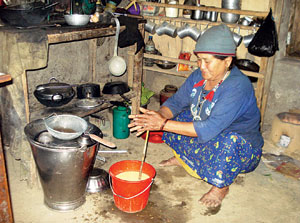As writers, especially those of us just starting out, we are always on the lookout for enigmatic and interesting subjects, say, for example, a man who has been living alone in the mountains for years, a former guerilla fighter, a place with some historical significance, or a place where no one goes. We are apt to believe that anything worth writing about is beyond the personal horizon, that the best subject is anyone other than you.
William Zinsser points out this belief in his classic book, ‘On Writing Well’: Of all the subjects available to you as a writer, the one you know best is yourself: your past and your present, your thoughts and your emotions. Yet it’s probably the subject you try hardest to avoid.
An uncompromising advocate of the need for retaining the element of humanity in writing, Zinsser urges writers to write in the first person. He is, in a way, urging writers to write about their lives. He speaks of facing resistance while doing this:
“Who am I to say what I think?” they [the writers] ask. “Or What I feel?”
“Who are you not to say what you think?” I tell them. “There’s only one you. Nobody else thinks or feels in exactly the same way.”
 I know a lady who, although not a writer, lives by the same philosophy. She lives in an old wooden house down the trail from a small village on a popular trekking trail. It doesn’t look much like a teahouse but it is one. Peer inside and at most times she will be working – washing dishes, cutting and slicing meat, cooking – to the accompaniment of a crackling radio. There are no specialty dishes; besides daal bhat she serves chhyang, or barley beer, and smoked meat. There is no menu, no posters of mountain ranges on the wall. Everything is laid bare—the owner’s material possessions and spiritual inclinations. Ashtrays made of bamboo stems are the only hint of an effort at décor; the rest is only a one-room house where you’re welcome.
I know a lady who, although not a writer, lives by the same philosophy. She lives in an old wooden house down the trail from a small village on a popular trekking trail. It doesn’t look much like a teahouse but it is one. Peer inside and at most times she will be working – washing dishes, cutting and slicing meat, cooking – to the accompaniment of a crackling radio. There are no specialty dishes; besides daal bhat she serves chhyang, or barley beer, and smoked meat. There is no menu, no posters of mountain ranges on the wall. Everything is laid bare—the owner’s material possessions and spiritual inclinations. Ashtrays made of bamboo stems are the only hint of an effort at décor; the rest is only a one-room house where you’re welcome.
Every time I am in the village I visit the lady, who is in my notes as “landlady of the chhyang teahouse,” to listen to her stories. “Kathmandu is a dowry from the Chinese,” she once began after finding out that my companion was Chinese. “The Chinese said, ‘Here you go, take it. Grow chilies in it’.” She runs her place seemingly as much on food as on lore and legends.
While she slices slabs of meat into strips to smoke them, she regales us with her stories. She glides from one story to another, telling us one moment about her first visit to Kathmandu, talking about her polygamous husband next, and then laughing that beautiful laughter that rings with “look what a mess my life is, but it’s some life, eh?” She slices and dices her life with her sharp-edged humor, and before we know, she has hung it out in front of us.
I admire her remarkable candor. To open up one’s life – and her family album – to strangers who had come asking for chhyang is remarkable. I wish I had that same candor and confidence when I write. We all have stories, but don’t always tell them. I have often given up a story, thinking “This one is not that interesting.” Or sometimes it is a lack of courage. Some of us slink back, telling ourselves “Who’d want to hear such a story?” Not the landlady of the chhyang teahouse.
Sometimes the biggest obstacle to writing, therefore, is the writer herself. “But nobody cares about my opinions” is a common excuse Zinsser has heard writers make. His suggestion: “They’ll care if you tell them something interesting.” The lady in that old wooden house, by candidly talking about her life, may just as well have been seconding his advice: “Tell your story.”









